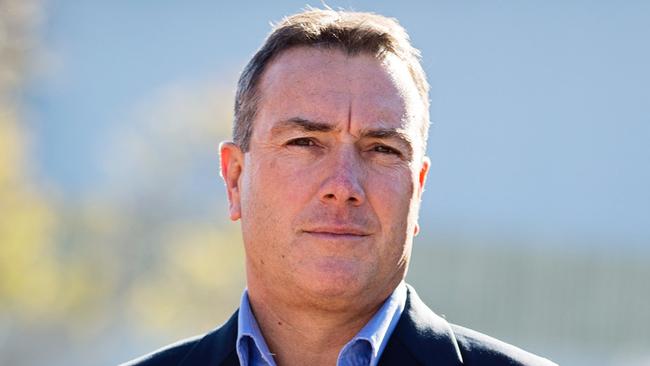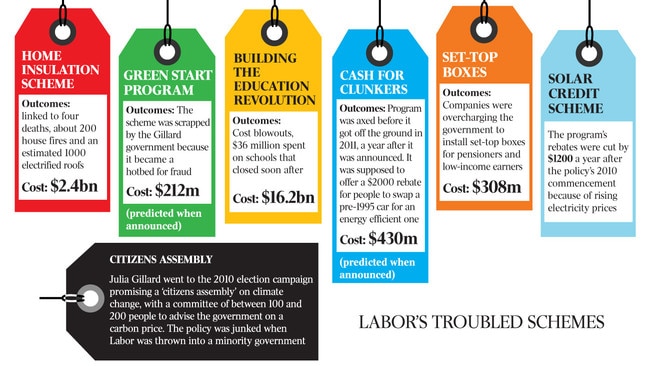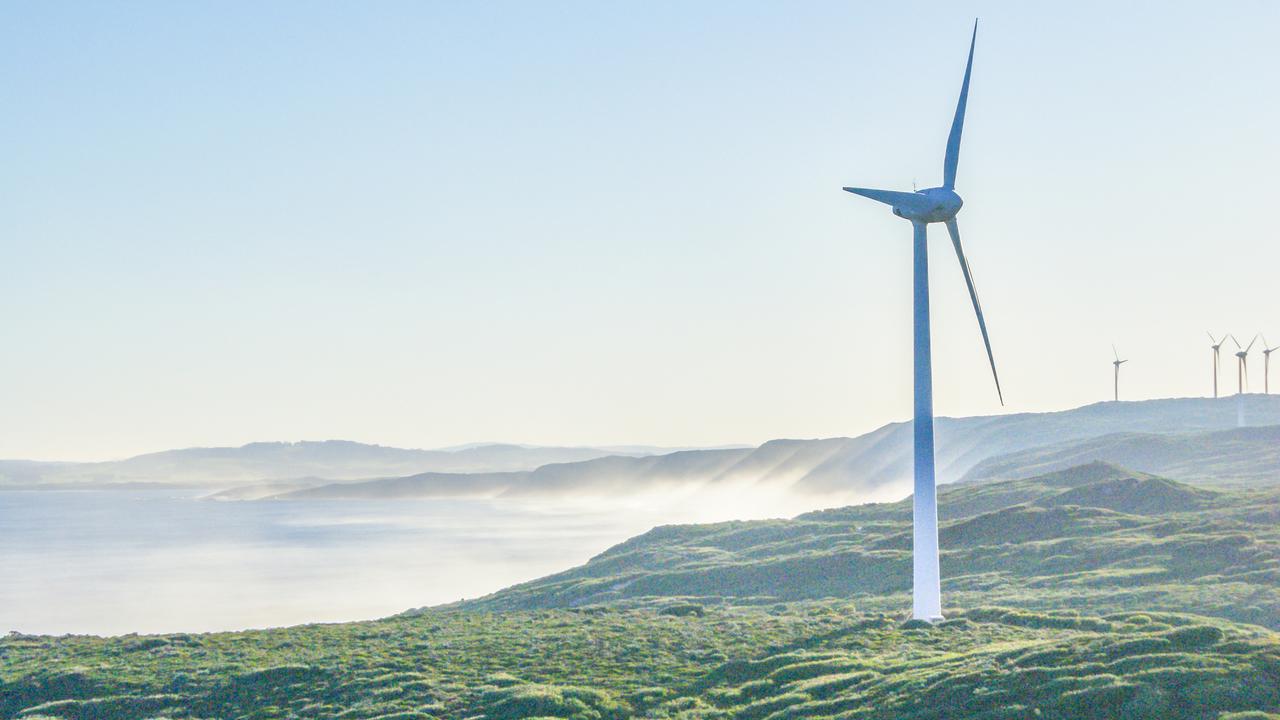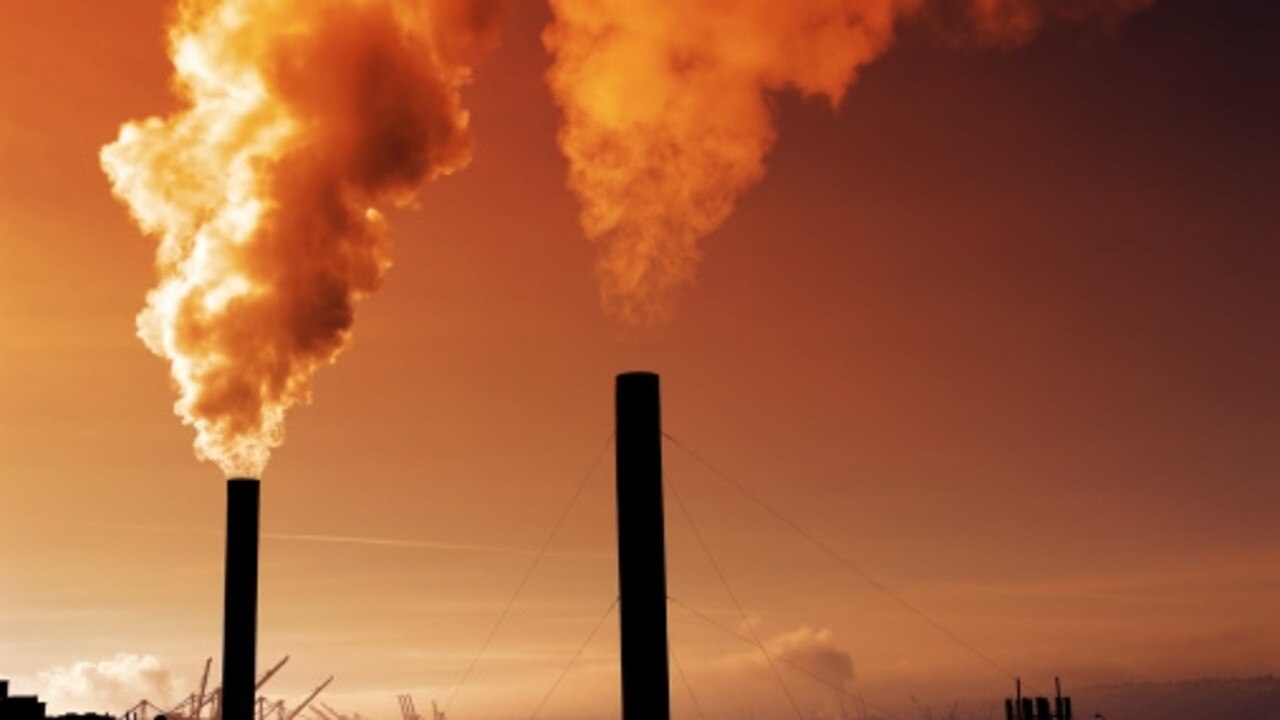Labor faces industry backlash as big energy user criticises policy
The nation’s largest single electricity user has questioned how it will be able to keep power running under Labor’s emissions reduction target.

The nation’s largest single electricity user has questioned how it will keep power running at its Tomago aluminium smelter under Labor’s 45 per cent emissions reduction target and $10 billion plan to turbo-charge investment in renewables, declaring that “batteries are not a solution”.
The warning from Tomago Aluminium chief executive Matt Howell came as Scott Morrison attacked Bill Shorten’s scheme to install one million new household battery storage systems across the country by 2025, saying it would lead to a repeat of the mistakes of the Rudd government’s botched home-insulation program.
“This is a throwback; a throwback to the Rudd-Gillard-Rudd failures of their time in government,” the Prime Minister said yesterday. “What we have got here is we have gone from pink batts to pink batteries. They never learn from their mistakes.”
Government analysis also suggested that Labor’s plan to provide $2000 subsidies for up to 100,000 household battery installations could burden average families with loan repayments of more than $300 each month over a period of several years.
The rebates are available for households with an income of less than $180,000, with the cost of batteries starting at about $10,000.
In a move that would phase out the nation’s reliance on coal-fired power, the Opposition Leader announced that Labor would inject $15bn into new renewable energy projects and an upgrade of Australia’s transmission and distribution systems, as well as reviving Malcolm Turnbull’s national energy guarantee.

Mr Shorten’s energy package included a $10bn capital injection for the Clean Energy Finance Corporation to boost investment in large-scale clean energy projects as well as the creation of a $5bn Energy Security and Modernisation Fund.
Mr Howell demanded more detail on Labor’s policy, noting that the smelter in the Hunter region consumed a steady load of 960 megawatts and accounted for about 11 per cent of NSW’s average power demand.
Energy Minister Angus Taylor warned yesterday that hundreds of thousands of jobs dependent on the supply of affordable and reliable power could be jeopardised by the Labor plan, including the 1100 jobs at Tomago.
“We are layering in intermittency, with more and more wind and solar coming in, displacing coal,” Mr Howell told The Australian.
“What I think about it (the Labor policy) is, there is insufficient detail. How will we achieve the 45 per cent emissions reduction across the country and 50 per cent renewable target and keep the lights on for energy-intensive manufacturing? If Australia wants to be a nation that makes things — bricks, glass, cement, steel and aluminium in particular — you’ve got to have internationally affordable and reliable energy. We are deeply, deeply concerned that our smelter is being called upon to load-shed when there is insufficient reserve margin in the National Electricity Market.”
Mr Howell noted that the Hornsdale Power Reserve — a battery storage facility in South Australia — would only be able to power the Tomago smelter for less than eight minutes. “Clearly batteries are not a solution,” he said.
Manufacturers also demanded more detail on what impact Labor’s more ambitious target to reduce carbon pollution by 45 per cent on 2005 levels by 2030 would have on emissions-intensive, trade-exposed industries.
Business and industry groups seized on Labor’s announcement to pressure the major parties into reviving the former prime minister’s national energy guarantee, warning that alternative plans to underwrite new power generation were fraught with risk.
Manufacturing Australia chief executive Ben Eade welcomed the “inclusion of the NEG framework” in Labor’s policy, but questioned how the more ambitious emissions-reduction target would affect industry. “We hope to see more detail about how extending one element — in this case emissions-reduction targets — would impact energy reliability and price, and in particular the impact on emissions-intensive, trade-exposed industries,” he said.
Mr Taylor said last night that Labor was asking families “struggling with their energy bill to shell out an extra $10,000 to $22,000 to pay for their pink batteries scheme”. “It does nothing more than saddle families with hundreds of dollars of monthly debt while locking them into today’s battery technology for the life of their loan term,” the minister said.
He said that if Labor was going to reduce emissions by 45 per cent, it would need an “explicit or hidden carbon price”, which could include vehicle-emissions limits as well as limits on stocking rates for farmers. “There are many ways to do it. You can call it what you like, but it’s a carbon tax,” he said.
Mr Taylor argued that, if the $10bn capital injection for the CEFC led to more intermittent power pushing out reliable generation from the energy mix, “then we can say goodbye to much of our manufacturing industry”.
“Aluminium will go early. And there’s no doubt this poses a threat to cement manufacturing, to fertiliser, to steel. But it also poses a threat to less-obvious industries like agriculture that relies on refrigeration,” Mr Taylor said.
Labor’s environment spokesman Mark Butler said the party would release more policy information in coming weeks, and was consulting companies such as Woodside about “a sort of emissions trading scheme”. Labor’s energy infrastructure fund would funnel investment into the upgrading of interconnectors as well as the building of new ones, such as a second connection across Bass Strait.
The Labor shake-up would also transition workers out of ageing coal plants, provide grants of up to $20,000 for manufacturers who wanted to improve energy efficiency, and establish a system of new “community power networks” across the country.
Mr Shorten said his plan was “about outlining our vision for the future”. “It is 50 per cent renewable energy by 2030; it is cutting pollution by 45 per cent by 2030; cutting power bills by hundreds of dollars a year; and creating tens of thousands of new renewable-energy jobs,” he said.
Business Council of Australia chief executive Jennifer Westacott said the NEG was a “credible, workable, market-based solution” to address the issues of affordability, reliability and carbon pollution.



